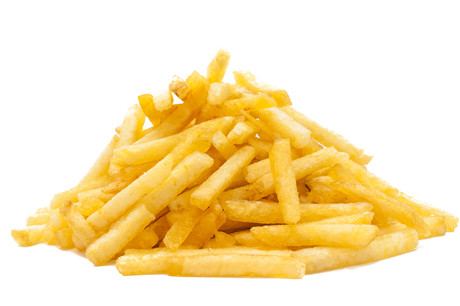Action needed to reduce acrylamide

Primary producers, food processors and consumers all need to be aware of the parts they can play in reducing acrylamide ingestion.
“Acrylamide is a probable carcinogen in humans, a Class 2a. This is effectively the highest rating for most chemicals, given that Class 1 chemicals are definite carcinogens, and that is a difficult thing to prove,” said Nigel Halford at a recent Rothamsted Research seminar.
Acrylamide is not a natural ingredient of food — it is basically a processing contaminant formed when starch is overheated to cause a reaction between amino acid asparagine and the sugars glucose, fructose and maltose, the ‘Maillard reaction’. Foods with high starch content such as potatoes, root vegetables or bread, crisps, cakes, biscuits and cereals that are cooked at high temperatures during the frying, roasting or baking process are the most common sources of acrylamide in our diets.
Acrylamide accumulates in a wide range of popular and staple processed foods that have been cooked above 120°C. Managing temperature is in fact the main factor for the formation of acrylamide. A particularly high amount is produced when potato and cereal-containing foods are heated above 180°C and this needs to be considered by those involved in any type of cooking or even pre-cooking during food.
The UK Food Standards Agency initiated a ‘Go for Gold’ campaign, which aims to encourage consumers to become more engaged on the issue, and to cook foods to a light gold colour rather than deeper browns as this reduces the amount of acrylamide being formed.
Colour is a good guide because it’s formed by similar chemical pathways to acrylamide, so it’s a very good indicator of how much acrylamide is forming. So, roast your potatoes to a light brown rather than a dark brown colour, and anything too crispy and dark is not very good.
From April 2018 food business operators in Europe are expected to:
- be aware of acrylamide as a food safety hazard and have a general understanding of how acrylamide is formed in the food they produce;
- take the necessary steps to mitigate acrylamide formation in the food they produce, adopting the relevant measures as part of their food safety management procedures;
- undertake representative sampling and analysis where appropriate, to monitor the levels of acrylamide in their products as part of their assessment of the mitigation measures;
- keep appropriate records of the mitigation measures undertaken, together with sampling plans and results of any testing.
In Australia and New Zealand FSANZ suggests there are a number of ways consumers can reduce their acrylamide intake:
- Potatoes should not be stored in the refrigerator or exposed to light as these environments increase the sugar content of the vegetable, which promotes acrylamide formation.
- Potatoes should be soaked in water for 15–30 minutes or blanched in boiling water before frying or roasting because this reduces the components that promote acrylamide formation.
- Follow manufacturer’s cooking instructions — many of them have adjusted their instructions to reduce acrylamide levels in their foods.
- Cook potato products such as oven fries, hash browns and roast potatoes in a moderate oven (180–190°C) to a light golden colour only. Deep-fried chips should be cooked at a maximum of 175°C. Chunkier style chips are preferable.
- Toast bread or other foods to the lightest colour acceptable to your taste, noting that the crust will have higher levels of acrylamide.
What can the food industry do?
Wheat farmers can ensure sulfur sufficiency for their crops and minimise the amounts of added nitrogen. Researchers are also identifying cultivars of wheat, rye and potatoes that have lower potential for acrylamide formation. Some food companies in the US are testing for sugar concentration in potatoes at the factory gate and turning consignments away if they are too high.
Food processors can be:
- vigilant in keeping processing temperatures under 175°C whenever possible, even if this increases cooking times;
- accurately monitoring temperatures at all times;
- choosing ingredients with reduced acrylamide formation potential;
- only cooking food to a light gold colour;
- including cooking instructions for consumers that reduce the risk of excessive acrylamide formation.
Eggless muffins using clean-label texturiser
Bakery solutions specialist Lasenor Emul, S.L. has crafted muffins with 50–100% less egg...
DNA base editing could enable better probiotic strains
Thanks to DNA base editing technology, researchers have created a strain of...
Tree sap: a plant-based gelatine alternative?
Researchers from the University of Ottawa may have found a new plant-based alternative to...











